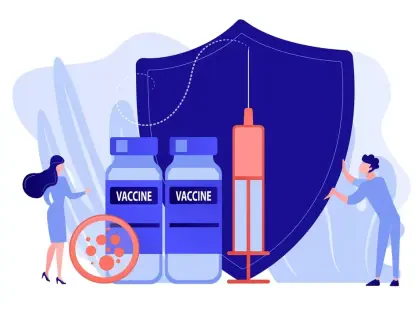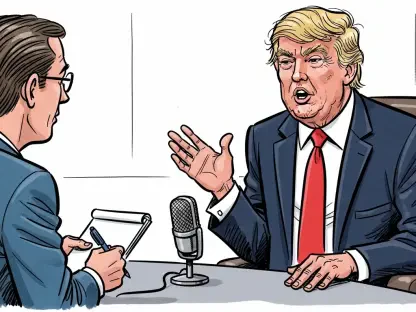In a time when public skepticism toward institutions is at an all-time high, state and local governments across the United States face an uphill battle to restore confidence among residents, a challenge that was brought into sharp focus at the recent GOVIT Leadership Summit and Symposium in Minneapolis. Hosted by the Public Technology Institute, the event shed light on a critical issue: the growing distrust in public entities amidst economic volatility and technological upheaval. As highlighted in a compelling article by Chris Teale, leaders from various regions gathered to confront this crisis head-on, emphasizing that the gap between governmental promises and actual delivery is a primary driver of public disillusionment. The core message resonating from the summit is clear—governments must demonstrate integrity by matching their actions to their words. Whether it’s rolling out community projects or responding to emergencies, the expectation for accountability has never been more pressing. This urgency stems from a societal shift where residents demand efficiency akin to private sector standards, leaving little room for delays or excuses. The insights shared by seasoned officials paint a vivid picture of both the challenges and the potential pathways to rebuilding trust. From transparency to robust communication, the strategies discussed offer a roadmap for navigating these turbulent times. This article delves into the root causes of the trust deficit and explores the actionable solutions proposed by local leaders, highlighting the critical need for governments to prove their reliability through consistent, tangible results.
Unpacking the Trust Deficit in Public Governance
The erosion of trust in state and local governments has emerged as a significant concern, casting a shadow over public institutions. Although Gallup polls indicate that confidence in these entities hasn’t declined as sharply as in federal bodies, a troubling downward trend persists, often influenced by partisan divides. Summit leaders identified a fundamental issue fueling this skepticism: the frequent mismatch between what officials pledge and what they ultimately achieve. When commitments like providing free internet access in public spaces are made but not fulfilled, the public’s faith in governance takes a substantial hit. This recurring failure to deliver isn’t merely a logistical shortfall; it represents a deeper breach of credibility that undermines the very foundation of local authority. Addressing this trust deficit requires more than just apologies or explanations—it demands a demonstrable shift toward reliability and follow-through on every promise made to communities.
Beyond the surface of unfulfilled promises lies a broader pattern of disillusionment that compounds the problem. Each instance of a broken commitment, whether due to budget constraints or logistical hurdles, adds to a narrative of unreliability that residents internalize over time. Speakers at the summit stressed that this perception isn’t easily reversed, as it creates a cycle where skepticism leads to disengagement, making it harder for governments to rally support for future initiatives. The challenge, therefore, is to break this cycle by prioritizing visible outcomes over rhetoric. By focusing on smaller, achievable goals initially, governments can begin to rebuild a reputation for dependability. This approach, rooted in tangible results, serves as a stepping stone to restoring long-term confidence among constituents who have grown wary of empty assurances.
Navigating Heightened Public Expectations
Another layer to the trust crisis is the escalating demand for government services to mirror the efficiency of private sector offerings. In an age dominated by rapid e-commerce solutions and instant smartphone interactions, residents have little patience for delays or inefficiencies in public projects. Scott Conn, Chief Information Officer of Mesa, Arizona, pointed out during the summit that this societal shift toward expecting immediate results places immense pressure on local administrations to adapt. The public now measures governmental performance against the seamless experiences provided by tech-driven companies, creating a benchmark that many agencies struggle to meet. Failure to align with these expectations doesn’t just frustrate residents—it deepens the existing trust gap, as people begin to question why public services lag so far behind private innovations.
This rising bar for service delivery also reflects a broader cultural transformation driven by technology and instant access to information. When a promised infrastructure update or community program stalls, the public’s reaction is often swift and vocal, amplified by social media platforms where dissatisfaction spreads rapidly. Leaders at the summit cautioned that ignoring this dynamic is no longer viable; governments must evolve to meet modern standards or risk further alienation. Adapting involves not just improving operational speed but also rethinking how services are communicated and prioritized to match resident needs. By embracing digital tools and streamlining processes, local administrations can begin to close the gap between public expectations and reality, demonstrating a commitment to responsiveness that can slowly rebuild eroded confidence in their capabilities.
Embracing Transparency for Credibility
Transparency and accountability stand out as vital tools for mending the fractured relationship between governments and the public. Kevin Wilkins, CIO and Chief Artificial Intelligence Officer for Fort Collins, Colorado, advocated strongly at the summit for openness about the obstacles that hinder project completion. If delays arise from infrastructure issues or regulatory barriers, officials should lay out these challenges plainly rather than obscure the reasons behind setbacks. Such candor, though potentially uncomfortable, signals honesty and respect for the public’s right to know. Wilkins also underscored the importance of proactively managing the narrative around government actions to counteract the spread of misinformation, which can distort perceptions and exacerbate distrust in an era of rapid information exchange.
Equally critical is the rejection of evasive language or excuses when things go awry, a point reinforced by Scott Conn during the discussions. Instead of relying on ambiguous statements or political jargon to deflect criticism, leaders should take ownership of failures and outline clear steps to address them. This approach not only humanizes governance by showing vulnerability but also builds a bridge of trust with residents who value straightforwardness over polished rhetoric. Transparency, in this sense, becomes a strategic asset, allowing governments to reset expectations and demonstrate a genuine commitment to improvement. By consistently prioritizing accountability over image, local administrations can foster a renewed sense of credibility, proving that they are willing to confront shortcomings head-on rather than hide behind vague assurances.
Strengthening Bonds Through Effective Communication
Communication serves as a cornerstone for maintaining public trust, particularly during crises and in day-to-day operations. Elizabeth Lo, Chief Operating Officer for Harris County, Texas’ Universal Services department, shared a compelling example from a severe winter storm that disrupted power and left residents in distress. By swiftly activating a multi-agency Emergency Operations Center and issuing real-time updates on available shelters and transportation options, the county managed to support vulnerable populations effectively. This rapid response, coupled with clear and continuous messaging, helped mitigate the chaos and reinforced public confidence in the government’s ability to act decisively under pressure. Such instances highlight how timely information can transform a potential trust-breaking event into an opportunity to demonstrate reliability.
Beyond emergency scenarios, consistent and transparent communication plays a pivotal role in shaping public perceptions during routine governance. Regular updates on project timelines, budget allocations, and policy changes help set realistic expectations and prevent misunderstandings that could fuel skepticism. Leaders at the summit emphasized that keeping residents informed—whether about successes or delays—creates a sense of partnership rather than alienation. This ongoing dialogue ensures that the public feels included in the governance process, reducing the likelihood of distrust festering in the absence of information. Effective communication, therefore, acts as both a preventive measure and a restorative tool, bridging gaps between government actions and public understanding while reinforcing a commitment to openness at every level.
Bolstering Internal Resilience for External Success
The internal challenges faced by government staff amid economic uncertainties and potential budget cuts cannot be overlooked when addressing public trust. Summit speakers highlighted that maintaining employee morale is crucial for sustaining the quality of service delivery, especially during turbulent times. Scott Conn described an innovative practice in Mesa, Arizona, where a bell is rung in the office to celebrate team achievements, no matter how small. This simple act fosters a culture of recognition and camaraderie, reminding staff that their contributions are valued even amidst external pressures. Such initiatives help maintain a positive work environment, ensuring that employees remain motivated to tackle the complex demands of public service with dedication and focus.
Equally important is the role of empathetic leadership in supporting staff through personal and professional challenges, as emphasized by Kevin Wilkins during the discussions. Taking the time to listen and understand the struggles faced by employees builds a foundation of trust within the organization, which in turn enhances overall performance. When leaders show genuine concern and remain present, it instills a sense of stability that empowers teams to navigate uncertainty without losing sight of their mission. This internal resilience directly impacts the ability to serve residents effectively, as a supported workforce is better equipped to deliver on promises. Prioritizing staff well-being, therefore, becomes an integral part of the broader effort to rebuild public trust, linking internal strength to external credibility in a meaningful way.
Charting a Path Forward with Actionable Integrity
Reflecting on the insights shared at the GOVIT Leadership Summit, it became evident that the journey to restore public trust demanded more than just words—it required concrete action rooted in integrity. Leaders consistently returned to the idea that aligning promises with outcomes was non-negotiable, a principle that shaped every strategy discussed. Whether through transparent admissions of setbacks or rapid communication during crises, the focus remained on proving reliability through deeds rather than declarations. The stark examples of past failures, like unmet community projects, served as lessons that shaped a renewed commitment to accountability among attendees.
Looking ahead, the path forward hinges on sustained efforts to integrate these lessons into governance practices. Local administrations must prioritize setting achievable goals, communicating progress with clarity, and investing in staff morale to ensure consistent service delivery. Embracing digital tools to enhance efficiency can also help meet modern expectations, while proactive narrative management can shield against misinformation. These steps, though challenging, offer a blueprint for rebuilding credibility over time. As the discussions concluded, there was a shared resolve to transform the trust crisis into an opportunity for reinvention, ensuring that state and local governments could emerge stronger by truly walking the talk in every aspect of their service to the public.









